- Choosing the Right Variety
- Growing season length
- Cold tolerance
- Cultural preferences
- Storage capabilities
- Popular carrot varieties for fall planting
- Preparing the Soil
- 1. Choose the Right Location
- 2. Clear the Area
- 3. Loosen the Soil
- 4. Improve the Soil
- 5. Adjust the pH
- 6. Create Raised Beds
- 7. Plan for Crop Rotation
- 8. Mulch the Soil
- 9. Water the Soil
- Timing is Key
- 1. Check the Frost Dates
- 2. Count Backwards
- 3. Consider the Carrot Variety
- 4. Provide Some Protection
- 5. Successive Planting
- Planting Techniques
- 1. Prepare the Soil
- 2. Choose the Right Carrot Varieties
- 3. Sow Carrot Seeds
- 4. Provide Adequate Water and Care
- 5. Thin Carrot Seedlings
- 6. Protect from Frost
- 7. Harvesting Carrots
- Watering and Fertilizing
- Watering:
- Fertilizing:
- Pest and Disease Control
- Preventing pests and diseases
- Common carrot pests and diseases
- Natural pest control options
- Harvesting and Storing
- Harvesting:
- Storing:
- Additional Tips and Tricks
- 1. Choose the right carrot variety:
- 2. Prepare the soil:
- 3. Sow the seeds:
- 4. Water regularly:
- 5. Use mulch:
- 6. Monitor pests and diseases:
- 7. Thin the seedlings:
- 8. Harvest at the right time:
- 9. Store properly:
- 10. Rotate crops:
- “Question-Answer”
- Is it possible to plant carrots in October?
- What are some tips for planting carrots in October?
- Can I plant carrots from seeds in October?
- What are some tricks for growing carrots in October?
- Will carrots planted in October be ready to harvest before winter?
- What are the benefits of planting carrots in October?
- “Video” How To Grow Tomatoes In Plastic Bottles Easily And Productively For New Gardeners
Are you looking to grow your own carrots this October? Planting carrots in October can be a rewarding and fulfilling experience. Carrots are a great addition to any garden, as they are not only delicious but also packed with vitamins and minerals. Whether you are a seasoned gardener or a beginner, this article will provide you with some valuable tips and tricks to help you successfully plant and grow carrots in October 2022.
Choosing the Right Carrot Variety
When it comes to planting carrots in October, choosing the right variety is essential. Some carrot varieties are better suited for cooler weather and have a shorter growing season. Look for varieties such as ‘Scarlet Nantes’, ‘Short ‘n Sweet’, or ‘Bolero’ that are known to perform well in cooler temperatures. These varieties have a good flavor and can be harvested in just a few months.
Preparing the Soil
Before planting your carrots, it is important to prepare the soil properly. Carrots prefer loose, well-draining soil. Start by removing any rocks, weeds, or debris from the planting area. Work the soil to a depth of at least 8 inches, breaking up any clumps and adding organic matter such as compost or well-rotted manure. This will ensure that the soil is loose and fertile, allowing the carrot roots to grow long and straight.
Pro Tip: Avoid using fresh manure, as it can cause the carrots to fork.
Sowing and Caring for Carrot Seeds
Once your soil is prepared, it’s time to sow your carrot seeds. Carrot seeds are small, so it’s important to sow them evenly. Create shallow trenches about 1/4 inch deep and sow the seeds thinly along the trench. Cover the seeds with a thin layer of soil and gently press it down to ensure good seed-to-soil contact.
Carrots need consistent moisture to germinate and grow. Water your carrot seeds regularly, keeping the soil moist but not waterlogged. You can also mulch the area with straw or shredded leaves to help retain moisture and suppress weeds.
Pro Tip: To help with germination, you can place a board or burlap over the newly sown seeds to keep the soil moist.
Harvesting Carrots
Depending on the variety you chose, you can expect to harvest your carrots in approximately 70-80 days. Check the size and color of the carrots to determine if they are ready for harvest. Carrots are typically ready when they reach a diameter of about 1 inch or when their color is vibrant. Gently harvest the carrots by loosening the soil around them with a fork or your hands, being careful not to damage the roots.
By following these tips and tricks, you can enjoy a bountiful harvest of carrots planted in October. Remember to experiment with different carrot varieties and keep track of what works best for your specific growing conditions. Happy carrot planting!
Choosing the Right Variety
When it comes to planting carrots in October, choosing the right variety is crucial for a successful harvest. Different carrot varieties have different characteristics, such as size, shape, color, and maturity time. Here are some factors to consider when selecting a variety.
Growing season length
One important factor to consider is the length of the growing season. Some carrot varieties take longer to mature than others. In October, when the days are shorter and colder, it’s important to choose a variety with a shorter maturity time. Look for varieties that can reach maturity within 60-70 days.
Cold tolerance
Since you’ll be planting carrots in October, it’s essential to choose a variety that is cold-tolerant. Some carrot varieties can handle frost and cold temperatures better than others. Look for varieties that are specifically labeled as “cold-tolerant” or “suitable for fall planting.”
Cultural preferences
Consider your cultural preferences when selecting a carrot variety. Carrots come in different colors, including orange, purple, yellow, and white. Additionally, they can have varying shapes, such as long and slender or short and round. Choose a variety that matches your personal preferences and culinary needs.
Storage capabilities
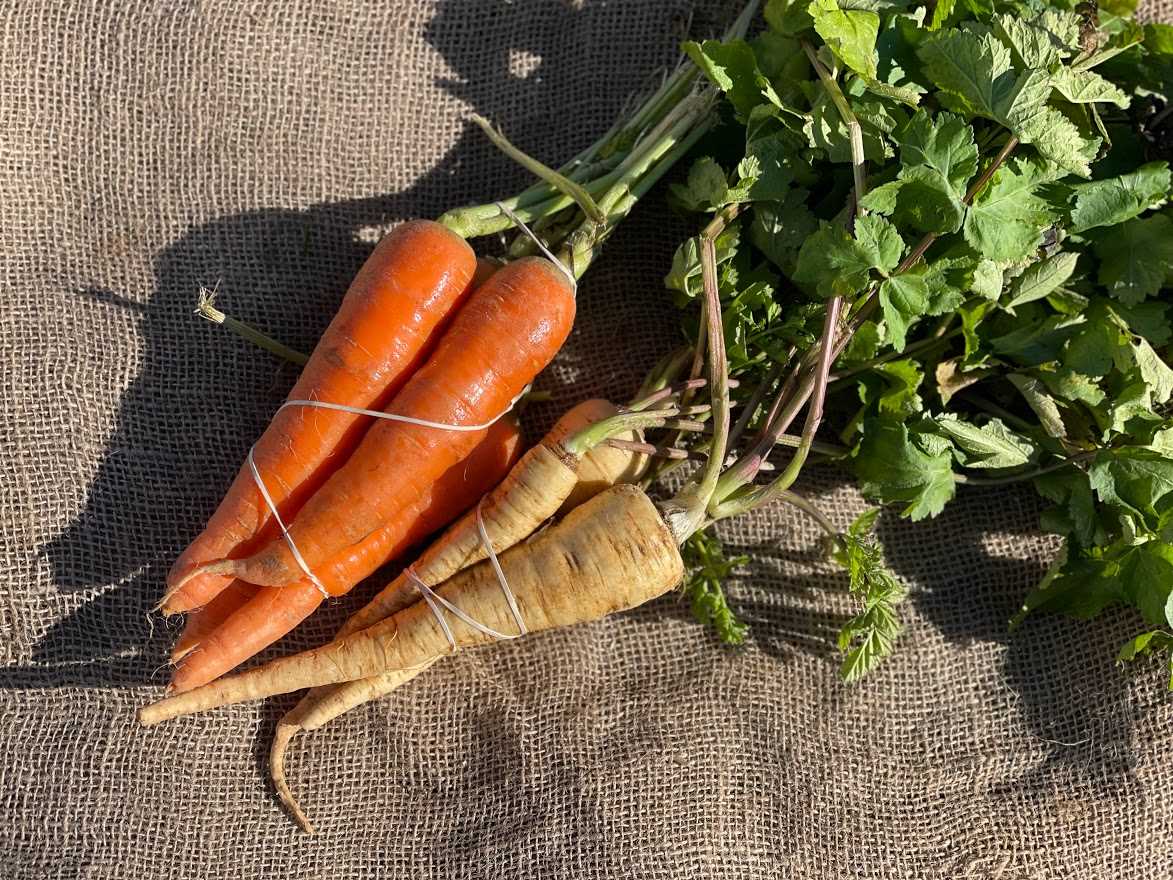
If you’re planning on storing your harvested carrots for an extended period, choose a variety that has good storage capabilities. Some carrot varieties are known for their long storage life and can last for several months if stored properly. Look for varieties that are specifically labeled as “good for storage” or “excellent keepers.”
Popular carrot varieties for fall planting
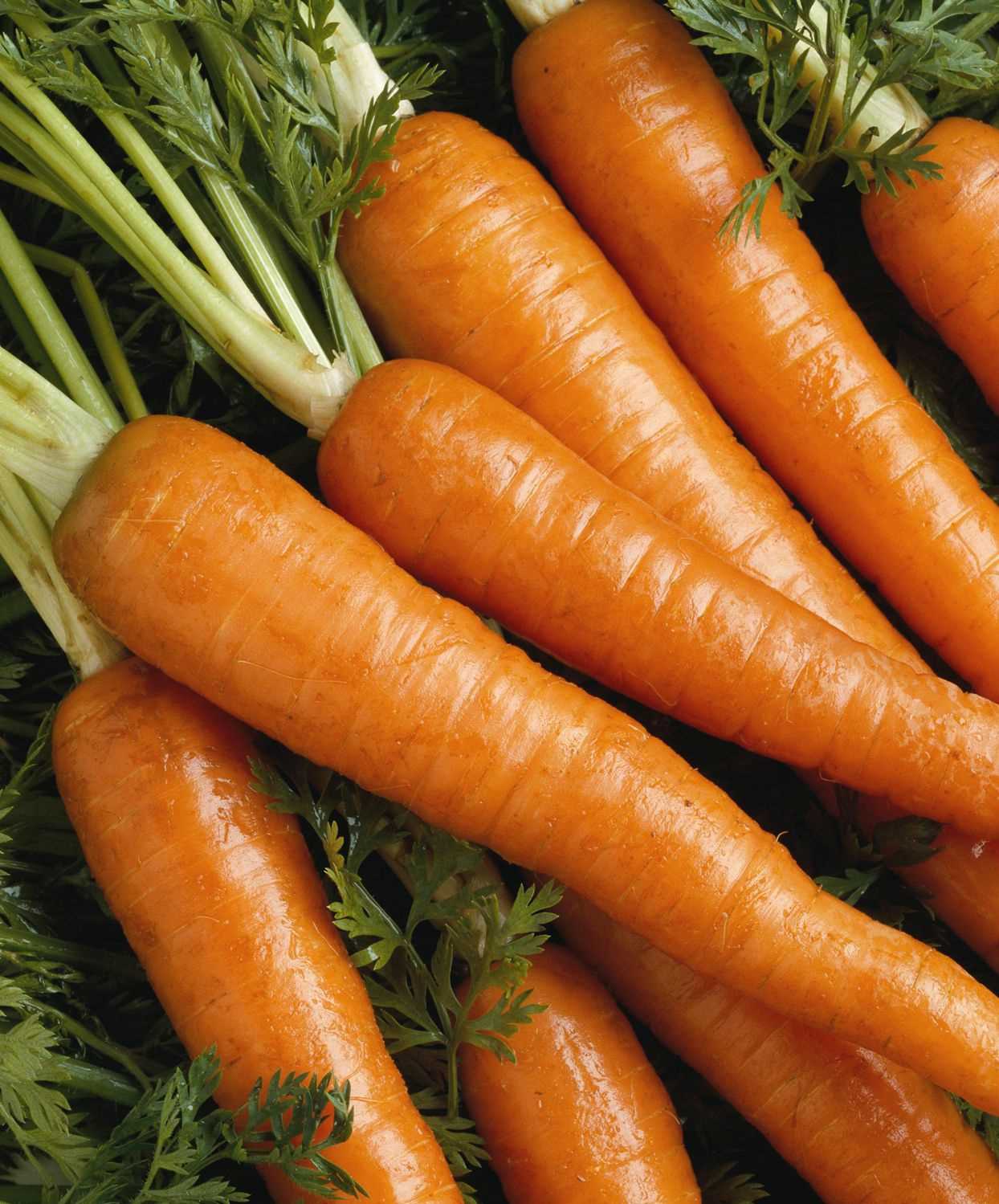
Here are some popular carrot varieties that are suitable for fall planting:
- Autumn King
- Scarlet Nantes
- Mokum
- Little Finger
- Red Cored Chantenay
These varieties are known for their shorter maturity time, cold tolerance, and good flavor. Make sure to read the seed packets or do some research to find the best variety for your specific location and growing conditions.
Preparing the Soil
Before planting carrots in October, it is important to prepare the soil to create optimal growing conditions for your crops. Here are some tips and tricks to help you get started:
1. Choose the Right Location
Carrots thrive in well-drained soil with plenty of sunlight. Select a sunny spot in your garden that receives at least six hours of sunlight each day. Avoid areas with heavy clay soil or poor drainage.
2. Clear the Area
Remove any weeds, rocks, or debris from the planting area. These can hinder carrot growth and make it difficult for them to develop straight and healthy roots.
3. Loosen the Soil
Use a garden fork or tiller to loosen the soil to a depth of at least 12 inches. This will promote good root development and allow the carrots to grow straight. Break up any clumps and remove any large stones.
4. Improve the Soil
Carrots prefer sandy or loamy soil that is rich in organic matter. Add compost or well-rotted manure to the soil to improve its texture and fertility. Work it into the top 6-8 inches of soil, ensuring it is evenly distributed.
5. Adjust the pH
Carrots prefer a slightly acidic soil with a pH between 5.8 and 6.5. Test the soil pH using a soil testing kit and make any necessary adjustments by adding lime to raise the pH or sulfur to lower it.
6. Create Raised Beds
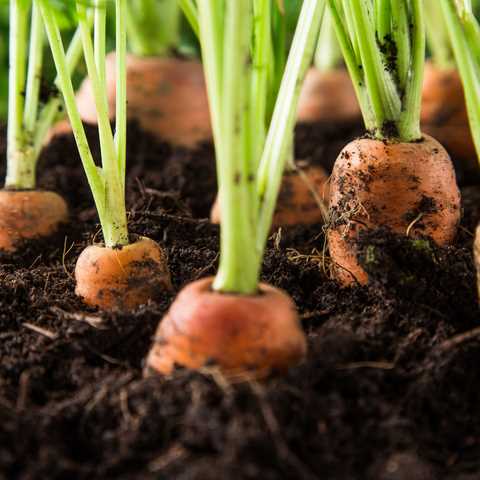
Consider creating raised beds for your carrot plants. Raised beds provide better drainage and allow for easier weed control. They also warm up faster in the spring, which can help with early growth.
7. Plan for Crop Rotation

If you have previously grown carrots in the same area, practice crop rotation to prevent the buildup of pests and diseases. Wait at least three years before planting carrots in the same spot again.
8. Mulch the Soil
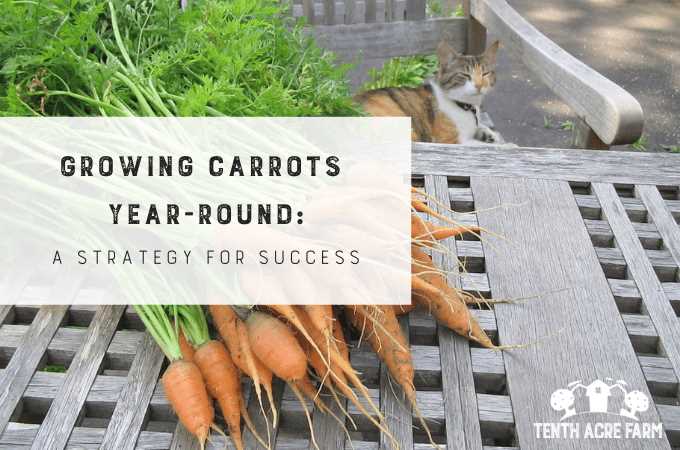
After planting, apply a layer of organic mulch, such as straw or shredded leaves, to help retain moisture and suppress weed growth. This will also help to regulate soil temperature and prevent the soil from drying out too quickly.
9. Water the Soil
Ensure the soil is evenly moist before planting your carrot seeds. Water the soil thoroughly and allow it to settle before sowing the seeds. After planting, water the soil regularly to keep it consistently moist, but avoid overwatering, as this can cause the carrots to rot.
By following these soil preparation tips, you can create the ideal growing conditions for your carrots and increase your chances of a successful harvest.
Timing is Key
When it comes to planting carrots in October, timing is key. It is important to plant your carrot seeds at the right time to ensure a successful harvest. Here are some tips and tricks for timing your carrot planting:
1. Check the Frost Dates
Before planting your carrots, it is important to know the average date of the first frost in your area. Carrots need a frost-free growing period of about 70 to 80 days to reach maturity. Planting too late in the season can result in stunted growth or even freezing and rotting of the carrots.
2. Count Backwards
To determine the ideal planting date for your carrots, count backwards from the first frost date. For example, if the first frost date in your area is around October 15th, you should aim to plant your carrot seeds around July 30th or earlier.
3. Consider the Carrot Variety
Different carrot varieties have different maturity dates. Some varieties mature faster than others, which means they can be planted later in the season. Be sure to check the recommended maturity date for the carrot variety you are planting and adjust your planting schedule accordingly.
4. Provide Some Protection
In cooler climates or areas with early frosts, you can provide some protection to extend the growing season for your carrots. Consider using row covers or cold frames to protect your carrots from frost and create a warmer microclimate for them to grow in.
5. Successive Planting
To ensure a continuous harvest of carrots throughout the season, you can practice successive planting. Instead of planting all your carrot seeds at once, you can stagger the planting by sowing a small amount of seeds every 2 to 3 weeks. This way, you’ll have a steady supply of fresh carrots all season long.
By carefully timing your carrot planting and considering the variety and growing conditions, you can maximize your chances of growing healthy and delicious carrots in October.
Planting Techniques
Planting carrots in October requires careful attention to planting techniques to ensure successful growth and development. Here are some tips and tricks to follow:
1. Prepare the Soil
Before planting carrots, it is essential to prepare the soil properly. Carrots prefer loose, well-drained soil with a pH level between 6.0 and 6.8. Start by removing any weeds and debris from the planting area. Use a garden fork or tiller to loosen the soil to a depth of 8-10 inches. Incorporate organic matter, such as compost or well-aged manure, to improve soil fertility and structure.
2. Choose the Right Carrot Varieties
There are various carrot varieties available, each with different sizes, shapes, and flavors. Select a variety that suits your preferences and growing conditions. Some popular carrot varieties for fall planting include Nantes, Danvers, and Chantenay. Consider factors such as maturity time, resistance to diseases, and intended use (fresh eating, canning, or storage) when choosing the right carrot variety.
3. Sow Carrot Seeds
Sow carrot seeds directly into the prepared soil. Carrot seeds are tiny, so it’s important to sow them thinly and evenly. Create furrows or shallow trenches in the soil about 1/4 to 1/2 inch deep. Place the seeds in the furrows, spacing them according to the seed packet recommendations. Lightly cover the seeds with soil and gently firm it down to ensure good seed-to-soil contact. Water the area gently to avoid washing away the seeds.
4. Provide Adequate Water and Care
Carrots require consistent moisture to develop properly. Keep the soil evenly moist during the germination and early growth stages. Be careful not to overwater, as this can lead to rotting of the root crops. Water deeply once a week if there is no rain. Mulching around the plants can help conserve moisture and suppress weed growth.
5. Thin Carrot Seedlings
Once the carrot seedlings emerge and establish their first true leaves, thin them to ensure proper spacing. Overcrowding can result in stunted growth and misshapen carrots. Thin the seedlings to about 2 inches apart for smaller varieties or 3-4 inches apart for larger varieties. Use scissors or your fingers to carefully remove the excess seedlings.
6. Protect from Frost
If frost is expected, provide protection to your carrot plants to prevent damage. Cover them with a row cover or a layer of mulch to insulate and trap heat around the plants. Remove the covering during the day to allow sunlight and airflow.
7. Harvesting Carrots
In general, carrots are ready for harvest between 60 and 80 days after planting, depending on the variety. Check the seed packet or variety information for the specific maturity time. Harvest carrots by gently loosening the soil around the root and pulling them out. Avoid excessive tugging or breaking the carrots. Remove the tops, leaving about an inch of stem, and store the carrots in a cool, dark place.
By following these planting techniques, you can enjoy a bountiful harvest of carrots planted in October. Remember to adapt and adjust these techniques based on your specific growing conditions and climate.
Watering and Fertilizing
Proper watering and fertilizing are essential for the healthy growth of carrots. Here are some tips to help you water and fertilize your carrot plants effectively:
Watering:
- Carrots require consistent moisture to develop properly. Keep the soil evenly moist throughout the growing season.
- Water deeply but infrequently. Aim to provide about 1 inch of water per week, either through rainfall or irrigation.
- Check the soil moisture regularly by inserting your finger about an inch into the soil. If it feels dry at this depth, it’s time to water.
- Water in the morning to allow the foliage to dry out during the day. This helps prevent the development of fungal diseases.
- Consider using drip irrigation or a soaker hose to deliver water directly to the soil, minimizing water waste through evaporation.
Fertilizing:
- Before planting carrots, prepare the soil by incorporating well-rotted organic matter, such as compost or aged manure. This provides essential nutrients to the plants.
- Carrots are not heavy feeders, so avoid excessive fertilization, as it can result in forked or deformed roots.
- Apply a balanced fertilizer with a nitrogen-phosphorus-potassium (NPK) ratio of 10-10-10 or similar before sowing the carrot seeds. Follow the recommended application rate on the fertilizer package.
- Alternatively, you can top-dress the soil with a slow-release organic fertilizer once the carrot seedlings have emerged.
- Avoid fertilizing too late in the growing season, as this may promote excessive top growth at the expense of root development.
By providing adequate water and nutrients, you can ensure that your carrot plants thrive and produce healthy, flavorful roots. Remember to monitor the moisture levels and adjust your watering schedule accordingly. With proper care, you’ll soon be harvesting a bountiful crop of delicious carrots!
Pest and Disease Control
Preventing pests and diseases
One of the best ways to control pests and diseases in your carrot patch is to practice preventative measures. Here are a few tips to keep in mind:
- Rotate your crops: Avoid planting carrots in the same area year after year, as this can lead to the buildup of pests and diseases in the soil.
- Clean and sterilize gardening tools: Before working in your carrot patch, make sure to clean and sterilize your gardening tools to prevent the spread of diseases.
- Plant companion plants: Certain plants, such as onions and garlic, can help to repel pests and diseases that commonly affect carrots.
- Use organic fertilizer: Avoid using synthetic fertilizers that can harm beneficial insects. Instead, opt for organic fertilizers that provide nutrients for your carrots without harming the ecosystem.
Common carrot pests and diseases
Despite your best efforts, pests and diseases can still find their way to your carrot patch. Here are some common ones to be aware of:
| Pest/Disease | Description | Control |
|---|---|---|
| Aphids | Small, soft-bodied insects that feed on the sap of carrot plants. | Remove aphids by hand or use insecticidal soap. |
| Carrot rust fly | A pest that lays its eggs in the soil near the base of carrot plants. | Cover carrots with a floating row cover to prevent adult flies from laying eggs. |
| Carrot root rot | A fungal disease that causes the roots of carrot plants to rot. | Avoid overwatering and ensure good drainage in your carrot patch. |
| Leaf blight | A fungal disease that causes brown spots on carrot leaves. | Remove affected leaves and avoid overhead watering. |
Natural pest control options
If you prefer to avoid using chemical pesticides, there are several natural pest control options you can try:
- Handpicking: For larger pests, such as slugs or beetles, handpicking them off your carrot plants can be an effective control method.
- Beneficial insects: Encourage beneficial insects, such as ladybugs and lacewings, to take up residence in your garden. These insects prey on common pests and can help keep their populations in check.
- Companion planting: Planting certain companion plants, such as marigolds or nasturtiums, can help deter pests from your carrot patch.
Remember, it’s important to monitor your carrot plants regularly and take action at the first signs of pest or disease infestation. By practicing good prevention techniques and using natural pest control options, you can help ensure a healthy carrot harvest.
Harvesting and Storing
Once your carrots have reached maturity, it’s time to harvest them. Carrots are typically ready for harvest around 60-75 days after planting, depending on the variety. Here are some tips for harvesting and storing your freshly grown carrots:
Harvesting:
- Start by loosening the soil around the base of the carrot plants using a garden fork or shovel. Be careful not to damage the roots.
- Gently pull the carrots out of the ground. If the soil is dry, this should be relatively easy. If the soil is heavy or compacted, you may need to dig around the carrots with your hands to loosen them.
- Harvest the carrots when they have reached the desired size. Look for a bright orange color and a firm texture. Avoid harvesting overly large carrots, as they may be tough and woody.
Storing:
- Before storing, remove the tops of the carrots, leaving about an inch of stem attached. This helps to prevent moisture loss and extends the shelf life of the carrots.
- Brush off any excess soil from the carrots, but do not wash them. Washing can introduce excess moisture and lead to spoilage.
- Store the carrots in a cool, dark place with good ventilation. A root cellar or refrigerator is ideal. Carrots can be stored for several weeks to a few months, depending on the variety and storage conditions.
- Consider storing carrots in a container filled with damp sand or sawdust. This helps to maintain moisture levels and prevent shriveling.
With proper harvesting and storage techniques, you can enjoy your homegrown carrots well into the winter months.
Additional Tips and Tricks
1. Choose the right carrot variety:
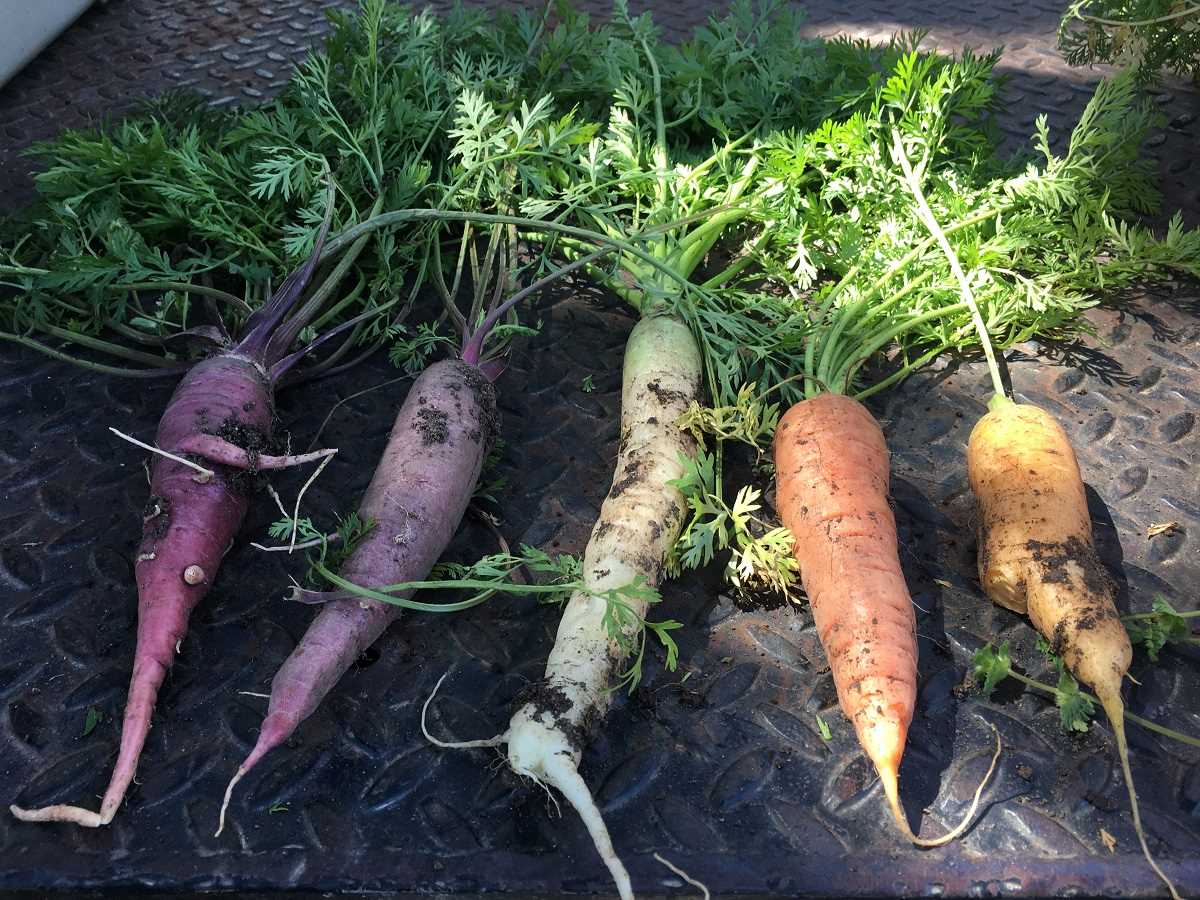
When planting carrots in October, it’s important to choose the right variety that is suitable for fall planting. Look for varieties that have a shorter maturity period, such as ‘Nantes’ or ‘Bolero’, which can be harvested within 60-70 days.
2. Prepare the soil:
Before planting carrots, prepare the soil by removing any weeds and loosening it with a garden fork or tiller. Carrots prefer well-draining soil, so consider adding compost or organic matter to improve the soil structure and fertility.
3. Sow the seeds:
Sow carrot seeds directly into the prepared soil, following the spacing instructions on the seed packet. It’s recommended to sow the seeds thinly to avoid overcrowding and promote healthy root development. Cover the seeds with a thin layer of soil and gently pat it down.
4. Water regularly:
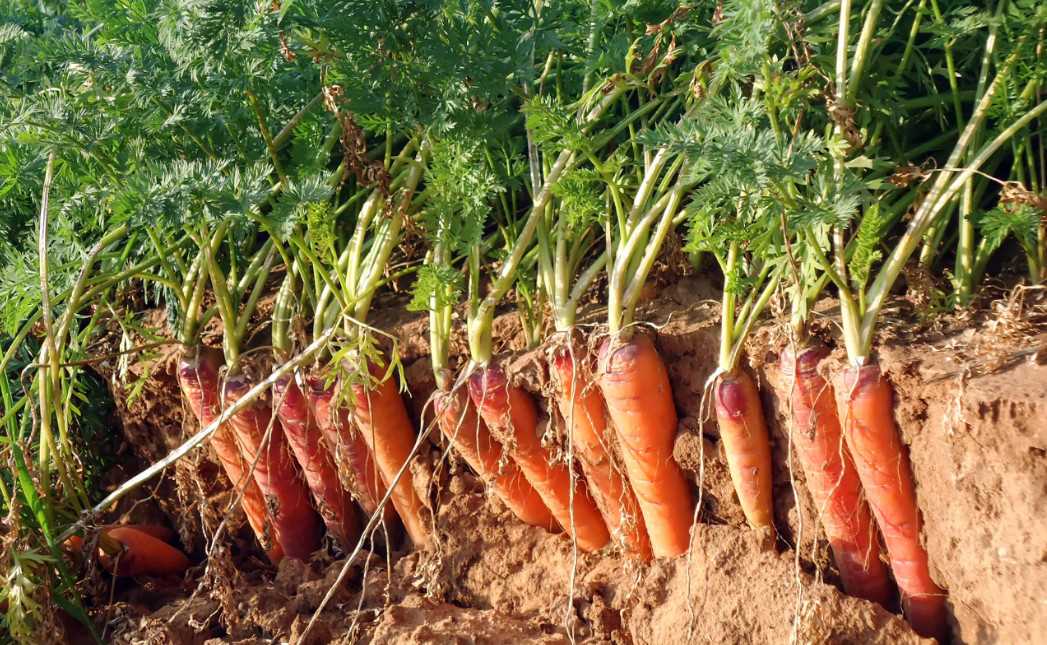
Keep the carrot bed consistently moist by watering it regularly. Carrots need consistent moisture to develop properly, so make sure to water deeply and evenly. Avoid overwatering, as it can lead to rotting or splitting of the roots.
5. Use mulch:
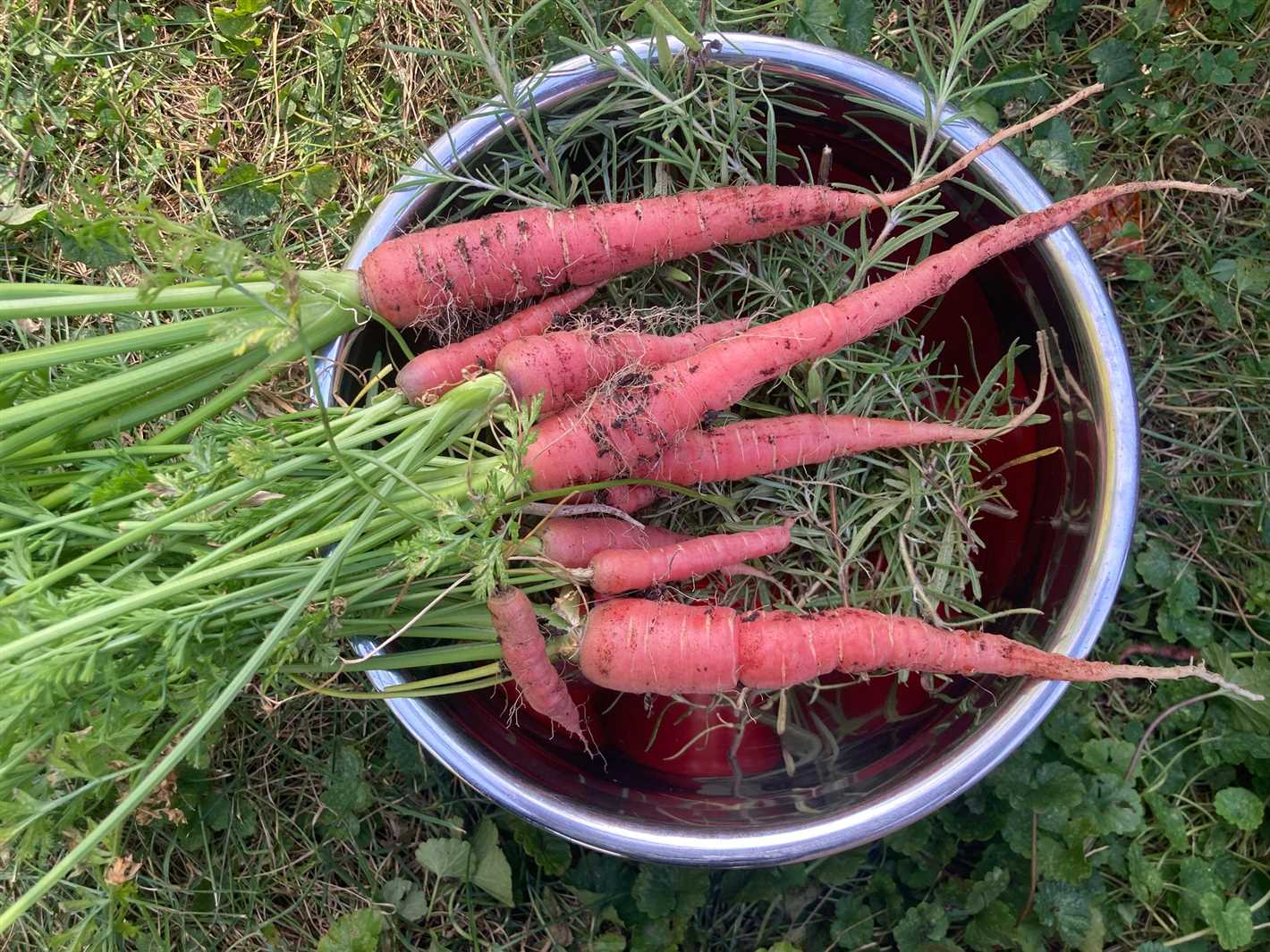
Consider using mulch, such as straw or shredded leaves, to help retain soil moisture and regulate temperature. Mulch also helps suppress weed growth and protects the delicate carrot seedlings.
6. Monitor pests and diseases:
Keep an eye out for common carrot pests and diseases, such as carrot fly or fungal infections. Implement preventive measures, such as using row covers or companion planting with strong-smelling herbs like garlic or onions, to deter pests. If necessary, treat any infestations or diseases promptly.
7. Thin the seedlings:
Once the carrot seedlings have sprouted, thin them out to ensure proper spacing for healthy root growth. Aim for about 2 inches of space between each seedling.
8. Harvest at the right time:
Harvest your carrots when they have reached their desired size. This can typically be determined by gently pulling up one carrot and checking its size. Carrots can be harvested while they are still small for a sweeter flavor, or you can wait until they reach their full size.
9. Store properly:
After harvesting, remove the greens from the carrots and store them in a cool, dark place. Carrots can be stored in the refrigerator for several weeks by placing them in a plastic bag or container with holes for ventilation.
10. Rotate crops:
To prevent diseases and maintain soil health, it’s important to practice crop rotation. Avoid planting carrots or other root crops in the same location year after year. Instead, rotate them with other non-related crops.
By following these additional tips and tricks, you can maximize your success when planting carrots in October and enjoy a bountiful harvest.
“Question-Answer”
Is it possible to plant carrots in October?
Yes, it is possible to plant carrots in October. Carrots are a cool-season crop that can tolerate light frosts. Planting in October allows the carrots to mature in the cooler temperatures of late fall and early winter, which can result in sweeter and more flavorful roots.
What are some tips for planting carrots in October?
When planting carrots in October, it is important to choose a sunny location with well-drained soil. Carrots prefer loose, sandy soil that is free of rocks and debris. It is recommended to prepare the soil by removing any weeds and adding organic matter. Carrot seeds should be sown about 1/4 inch deep and 1-2 inches apart. Keep the soil consistently moist during the germination period, and thin the seedlings to ensure proper spacing. Applying a layer of mulch can help conserve moisture and regulate soil temperature.
Can I plant carrots from seeds in October?
Yes, you can plant carrots from seeds in October. Carrots are typically grown from seeds, and direct sowing is the preferred method. Make sure to choose a carrot variety that has a shorter maturity period to allow for harvest before the first hard frost. Follow the recommended planting depth and spacing for the specific variety you are planting.
What are some tricks for growing carrots in October?
One trick for growing carrots in October is to use row covers or cloches to protect the young seedlings from cold temperatures and pests. These covers can provide a few extra degrees of warmth and create a microclimate for the carrots to thrive. Additionally, you can choose to plant carrot varieties that are more resistant to cold, such as ‘Bolero’ or ‘Napoli’. Regularly monitoring soil moisture and providing the carrots with consistent watering can also help them establish and grow during the fall season.
Will carrots planted in October be ready to harvest before winter?
Carrots planted in October can be ready to harvest before winter, depending on the variety and the local climate. It is important to choose carrot varieties with shorter maturity dates, typically around 60 to 70 days, to ensure that they have enough time to grow before the first hard frost. By monitoring the growth of the carrots and checking their size, you can determine when they are ready for harvest. Harvesting before the ground freezes is crucial to prevent the carrots from rotting or becoming tough.
What are the benefits of planting carrots in October?
Planting carrots in October offers several benefits. Firstly, the cooler temperatures of late fall and early winter can result in sweeter and more flavorful carrots. Additionally, planting carrots in the fall allows you to extend the growing season and enjoy a fresh harvest even as other crops are dying off. Carrots are also known to store well, so you can continue to enjoy your homegrown carrots throughout the winter months.







